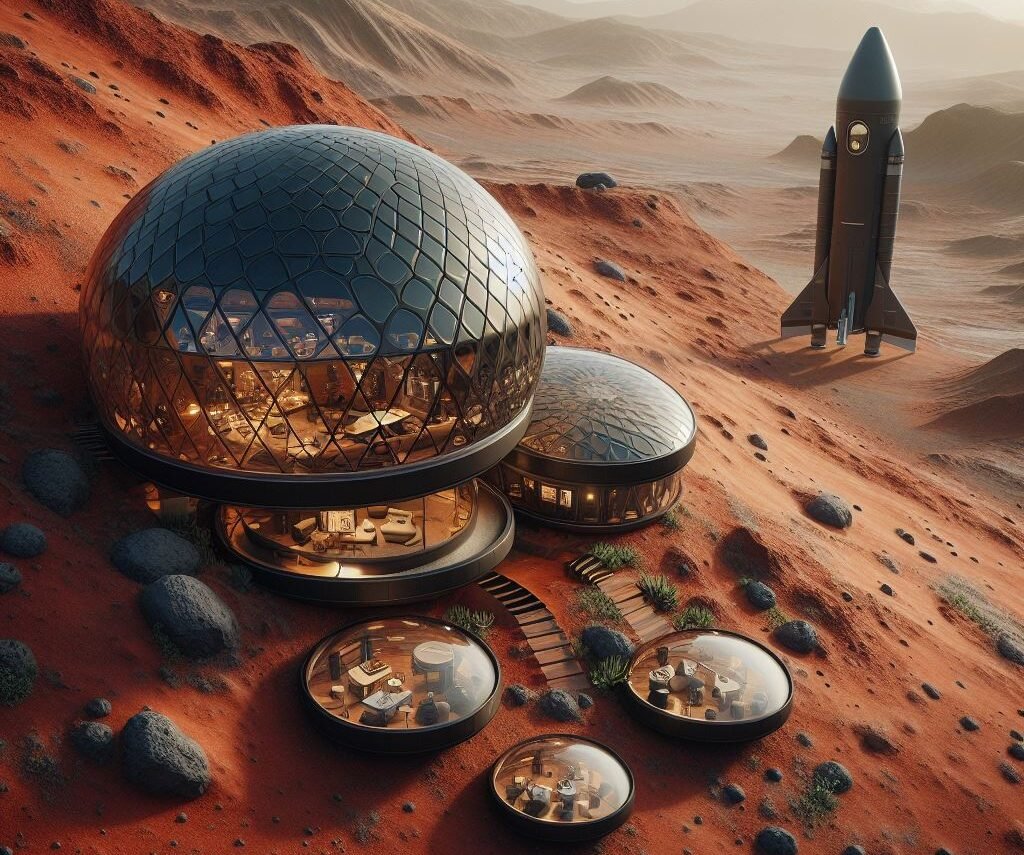Imagine setting foot on Mars, our next potential home. The dream of colonizing the Red Planet is inching closer to reality, fueled by recent milestones in space technology. This scenario sparks a myriad of questions: Can we create a self-sufficient Mars colony? What would life look like there, and what would it take to sustain it?
In this article, we’ll explore the essentials of living on a base on Mars, from the necessary infrastructure to the resources we can utilize. Join us as we delve into the future possibilities of space colonization. Ready to envision living millions of miles away? Let’s blast off with some Q&As.
Step 1: Robots Lead the Way

Q: Will robots be sent to Mars, and what will they do?
A: Indeed, robots will be crucial for early Mars missions, taking on foundational tasks before humans arrive.
Building and Setup: They’ll prepare landing sites and construct initial habitats. Mining: Robots will extract essential resources like water ice and minerals. Research: Continual environmental analysis will be done by robots to gather important Martian data. Maintenance and Emergency Handling: Robots will manage ongoing repairs and respond to emergencies, protecting the colony’s infrastructure.
Step 2: Achieving Self-Sufficiency
Q: How can we make a Mars colony self-sufficient?
A: To achieve self-sufficiency on Mars, we’ll need to master the art of using what we have in innovative ways. This includes setting up robust recycling systems that can handle everything from water to waste, ensuring nothing goes to waste. Think big, like factories powered by Martian soil that 3D print our daily needs, from tools to building parts. And we can’t forget about food—imagine sprawling biodomes where genetically optimized plants flourish, providing fresh produce year-round.
Step 3: Building Essential Infrastructure

Q: What kind of infrastructure is needed for a Mars base?
A: First up, housing: we’d use Martian soil itself to build homes. By heating the regolith, we can create solid bricks right on Mars, which helps protect against radiation. Life support is another biggie—systems that mimic Earth’s ecosystems to recycle and purify everything from the air we breathe to the water we drink. And for food, we’d build high-tech farms that use minimal soil and water to produce crops under artificial lighting.
Step 4: Utilizing Mars’ Natural Resources
Q: Are there enough resources on Mars to support human life?
A: Absolutely! Mars has a ton of untapped resources. There’s ice just beneath the surface that can be converted into drinking water or even split into hydrogen and oxygen for fuel and breathing. The thin Martian atmosphere, rich in carbon dioxide, can also be processed to extract oxygen. And let’s not forget the minerals in Martian soil—perfect for constructing everything from habitats to electronics.
Step 5: Producing Oxygen and Water
Q: How can we produce oxygen on Mars for colonists to breathe?
A: We can produce oxygen using a scaled-up version of the MOXIE experiment, which currently converts Martian atmospheric CO2 to oxygen. Another method is through electrolysis, where we split water from the ice deposits into oxygen and hydrogen. This not only helps us breathe but also gives us fuel for future explorations.
Q: Can liquid water exist on Mars, and how can we access it?
A: Liquid water can’t exist on the Martian surface right now because of the low atmospheric pressure and cold temperatures. However, by heating subsurface ice, we can create water in a controlled environment. Storing this water then becomes crucial—we’d need insulated tanks designed to prevent the water from freezing or evaporating away.
Step:6 Optimal Power Sources for Mars

Q: What would be the best power source for a Mars colony?
A: Considering Mars’ environment, nuclear power stands out as potentially the most reliable option. It’s less dependent on environmental variables like sunlight, which can be scarce during dust storms or the Martian winter. A combination of nuclear and solar power could offer both stability and redundancy, ensuring that the colony has energy no matter the circumstances.
Conclusion
With smart engineering and a bit of Martian ingenuity, building a self-sufficient colony on Mars isn’t just a pipe dream. It’s a real possibility that could expand the frontiers of human exploration and settlement. What do you think—are you ready to sign up for a stint on Mars, or would you rather wait until they’ve ironed out the kinks? We invite you to share your thoughts and join the discussion below.






